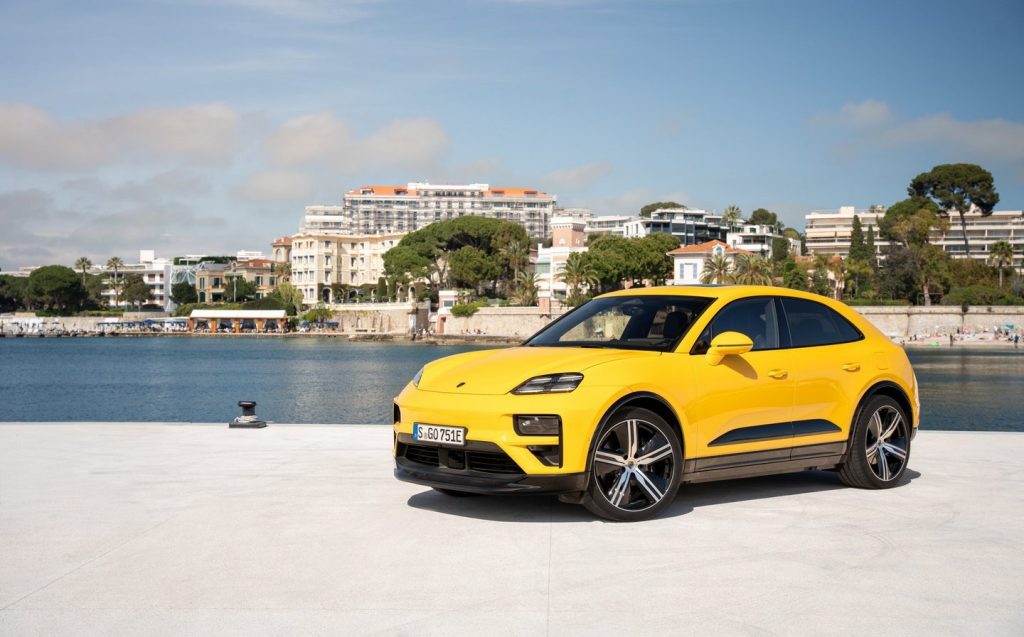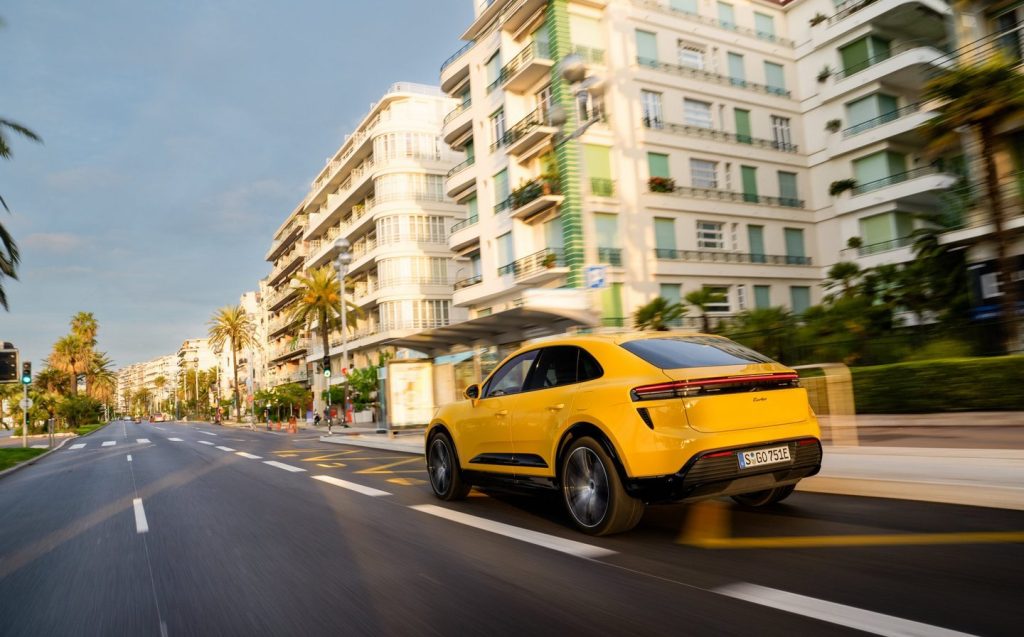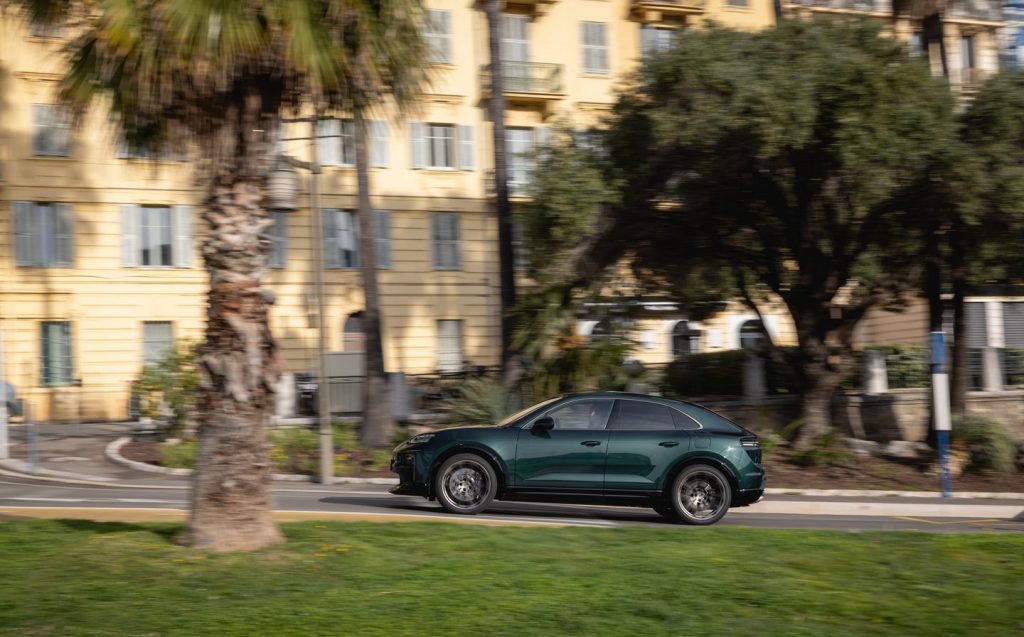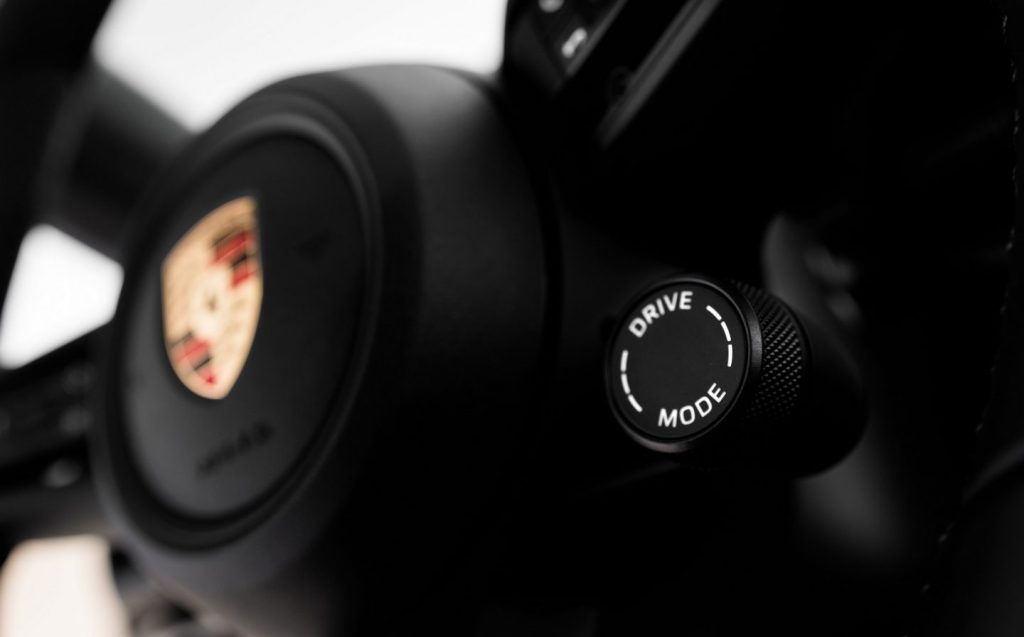Porsche Macan 2024 review: Sporty compact SUV goes electric, but is it still the class leader for handling?
Petrol model still available — for now
A handful of diehard Porsche enthusiasts have never forgiven their beloved sports car company for supposedly bastardising the brand with the launch of the Cayenne SUV, more than two decades ago. They try to ignore what the big SUV has done for the German firm’s bottom line.
Softened up by that car’s introduction, the same people have never been as vociferous in their hatred for the Porsche Macan. It probably helps that the smaller SUV in the range has always lived up to the Stuttgart crest on the bonnet in terms of the way it drives, and it has sold like the proverbial baked goods at an elevated temperature.
The times they are once again a-changing and Porsche, like all other car makers, is on a path to full electrification (though still hedging its bets with investment in synthetic eco fuels). The recent updates to the Cayenne and Panamera have plug-in hybrid power as their focus with longer electric driving ability than ever. Meanwhile, the five-year-old pure-electric Taycan has been significantly updated, and it’s widely known that the next-generation 718 Boxster and Cayman sports cars will be powered by battery. Even the hallowed 911 will get some electrification soon.

It was therefore inevitable that the popular Macan, coming to the end of its life in its current form anyway, would become the second electric Porsche. Now it’s here and if initial social media commentary is anything to go by, the masses are more annoyed with the continued use of the word “Turbo” on a car that has no turbocharger than they are with the fact Porsche now makes a compact electric SUV that some will liken to a Tesla Model Y.
Not that you’d mistake the new electric Macan for a Tesla, as it’s clearly from the same school of design as the rest of the Porsche line-up. Indeed, if it were launched as the Macan Coupé then most people wouldn’t bat an eyelid as the new electric model has a notably curvier rear end than the existing petrol version.
That’s in the name of aerodynamics: as a vehicle’s drag has a considerable influence over how much energy it requires to move through the air, the carmakers’ engineers have been working their wind tunnels hard to make the car more slippery and thereby ensure their electric models can travel as far as possible on every kilowatt-hour of e-juice.

To that end, the electric Macan uses active aerodynamics, in the forms of an automatically deploying rear spoiler and more subtle active cooling flaps in the nose.
That front end is mildly restyled between the two launch models — the Macan 4 and Macan Turbo — though both use “air curtains”, which channel air through slots in the extremities of the nose and across the front wheels to further reduce drag.
Only when you look at those air inlets do you realise that’s where the headlights are, as they’re almost hidden from view and certainly overshadowed from a style perspective by the light units atop the bonnet. These give the Macan its “face” and tie it in with the Taycan, design-wise, though they only house the daytime running lights, in Porsche’s now signature four-point layout.

Further design differentiators between the models include the side sill styles and extra vents in the Turbo’s rear bumper that somehow remind us of the Porsche 959 (prepare for the incoming vitriol…). There are different 20in wheels fitted to the models by default as well but given the bewildering number of wheel options (up to 22in in diameter) and finishes offered, you can’t rely on that to tell these cars apart.
Pull open any of the four doors and you’ll discover they have frameless windows now — the old Macan did not — which is a nice touch, and the interior is much like that of the updated Cayenne. It’s shrink-wrapped a tad, of course, though feels spacious enough up front without losing the cockpit vibe of the original Macan. #
A perfectly-round steering wheel with a perfectly-proportioned rim (BMW: take note) sits ahead of a set of sharp digital instruments. Despite the lack of any cowl, it remains crystal-clear and easy to read, even in bright sunshine.

As elsewhere in the Porsche range, the tactile drive selector is now mounted high on the dashboard to free up space between the front seats. The Macan’s centre console is quite tall, enabling a multi-level design packed with useful features. There’s a cooled wireless smartphone charger, for example, a couple of different storage areas and low-set cupholders that should hold taller bottles better than most of their kind. Those are complemented by notably large door bins.
Also on the centre console are physical controls for the air conditioning and heating. Thankfully Porsche has realised that people don’t actually want these on the touchscreen vying for space with their Spotify playlists.
And on that note, we’re very happy to see that the Macan has air vents you reach out and move with your hands, rather than the ill-judged system found elsewhere in the range that requires interfacing with the touchscreen.

The Macan’s infotainment system (or Porsche Communication Management – PCM – if you’re into quoting the carmaker’s own acronyms) is new and uses the Android Automotive OS to good effect, though we didn’t really have time to explore it in full.
Buyers can add a second touchscreen to the upright dashboard if they wish, accessible and viewable only from the passenger seat. A more worthwhile addition is the optional head-up display, which uses augmented reality for safety and navigation instructions.
Although the electric Macan has a longer wheelbase than the petrol version, the rear-seat legroom is best described as adequate. Those in the outer two positions won’t have much to complain about — so long as the front-seat occupants aren’t feeling ungenerous with the positions of their electrically-controlled chairs — but the middle rear seat is compromised in terms of the seat base shape, the existence of a transmission tunnel and the fact that the centre console eats into their space.

Much better is the boot. It’s accessed via an electrically-opening tailgate as standard and holds 540 litres of luggage in the Macan 4. That figure drops to 480 litres in the Turbo as its rear motor takes up more room, though the rear seats split and fold down if you need to carry bulkier items.
Usefully, there’s another 84 litres of space under the bonnet up front and where that’s opened in some EVs via an awkward footwell lever, it can be opened from the Macan’s key. Or, if you upgrade to the keyless-entry system, by simply swiping your hand over a sensor near the Porsche badge. All this means it’s likely to be used for more than just the charging cables.

On the subject of charging, the Macan can accept a rapid DC charge at up to 270kW or AC power at up to 11kW on a suitable charger. In theory, it’s possible to charge the 95kWh battery (that’s the usable energy capacity) from 10-80 per cent in as little as 21 minutes.
Though the Macan has an 800-volt electrical architecture like the Taycan (many EVs still use 400v systems, which means slower charging and energy deployment), Porsche’s mid-size SUV is actually built on different underpinnings. It’s a new chassis, developed in conjunction with Audi, called Premium Platform Electric (resulting in the unfortunate, post-covid, acronym “PPE”), and the forthcoming Audi Q6 e-tron uses the same base structure.

Porsche quotes a range on a mix of roads of up to 380 miles for the Macan 4, based on the official WLTP test, though wheel size and other options make a difference and in the UK, where the ambient temperature is typically below the 23C stipulated by WLTP, you should expect to get less in the real world. Our test drive would suggest that the 380 figure is not complete fantasy in warm conditions, though.
It manages that without relying on using brake energy regeneration at every given moment, instead allowing the Macan to “coast” as far as possible, using little to no energy. Indeed, it’s all but impossible to detect if the car is using the motors or the friction brakes to slow it down, so polished is the blending between the two — notably so as you battle with stop-start traffic.
Both the Macan 4 and Turbo use a motor on each axle for all-wheel drive, though the rear motor on the Turbo is unique to Porsche and it comes with PTV Plus (Porsche Torque Vectoring Plus — an electronically controlled locking differential, which feeds power to each wheel).
Performance is suitably brisk. The Turbo’s dual motors combine to produce a nominal 576bhp, though that’s increased to a heady 630bhp during launch control, which results in a 3.3-second 0-62mph time. It may not have a turbocharger but that certainly lives up to the performance promise of the badge.

Even the entry-level Macan 4, which is expected to be the most popular variant, can produce 382bhp in everyday driving, peaking to 402bhp using launch control. A 0-62mph time of 5.2 seconds in a compact SUV is more than adequate, we reckon.
The proliferation of electric vehicles has somewhat democratised neck-snapping, nausea-inducing acceleration, so that’s not going to be enough to warrant a Porsche engineer’s seal of approval. Thankfully, the Macan’s chassis seems up to the challenge, though the caveat is that both our Macan 4 and Turbo test cars featured air suspension and adaptive damping (PASM — Porsche Active Suspension Management), a set-up that is only standard on the Turbo. The 4 has to make do with steel springs and fixed-rate dampers unless you pay extra.

Normal, Sport, Sport Plus and Offroad driving modes are selected via a little rotary switch mounted to the steering wheel and, depending on options of course, this has a pronounced effect on how the car drives. The air suspension, while always operating automatic self-levelling, also alters the ride height depending on the setting — dropping the car as much as 30mm for maximum attack or raising it up as high as 40mm to go off road.
There’s notably more body control in the corners using the Sport settings, for sure, though many will find the damping a little too firm in the Sport Plus mode. For everyday driving, it’s just about soft enough in the Normal mode, though no magic carpets will be needed to describe how it drives along — acceptably firm is the best we can come up with.

Even in regular driving, the steering has a satisfying directness and weighting, with no slack in the system, but neither is it hyperactive in its response. Up the pace, and you’ll find it a willing companion, isolating the worst of the road from your hands while informing you what’s going on at road level. It’s very well-judged and works in all scenarios.
There is rear-axle steering available as an option that enhances low-speed manoeuvrability and agility through slower corners (up to about 50mph), while aiding stability at higher speeds, though we found the standard system perfectly good.

In the Normal mode, the rear motor is predominantly used, in the name of efficiency, with the front motor employed when necessary. We’re told that the front motor is used more in the Sport settings to aid traction, and yet in Sport mode we discovered it’s remarkably easy to provoke the rear of the car to step out of line on the exit of tighter corners — even in bone dry road conditions.
Once this was revealed, we spent the rest of the test drive childishly seeking out well-sighted hairpins to play on. All in the interest of research of course.
A few hours at the wheel were enough to confirm that the Macan’s reputation for being the driver’s SUV is intact, yet it plays the daily-driving role better than ever.

The electric Porsche Macan is not a cheap car, of course. The Macan 4 starts at £69,800, or £8,300 more than the similarly-powerful, petrol-fuelled Macan S (which will soldier on in the UK market for a little while longer), and there’s a handful of other electric SUVs on the market with comparable performance that cost considerably less.
But the new Macan isn’t just an electric version of the existing car — it’s much more than that. While it retains all that buyers love about the petrol model in terms of driving engagement, it’s considerably more modern, a little more practical and even more polished a product. If you’re ready to forgive Porsche for moving with the times and you’re ready to go electric, the new Macan offers a compelling way to do so.
Related articles
- If you liked reading our review of the new electric Porsche Macan, you might also want to read a review of the updated Porsche Taycan
- You might also be interested in our Aston Martin DBX707 on-track video review
- Thinking of getting behind the wheel of a new vehicle this year, as a private or company car driver? Check out 11 of the most exciting new models arriving in 2024
Latest articles
- Five best electric cars to buy in 2025
- Should I buy a diesel car in 2025?
- F1 2025 calendar and race reports: The new Formula One season as it happens
- Zeekr 7X AWD 2025 review: A fast, spacious and high tech premium SUV — but someone call the chassis chief
- Denza Z9GT 2025 review: Flawed but sleek 1,062bhp shooting brake from BYD’s luxury arm
- Extended test: 2024 Renault Scenic E-Tech review
- Best-selling cars 2025: The UK’s ten most popular models of the year so far
- Audi A6 Avant 2025 review: Trusty executive estate ticks expected boxes, and there’s still a diesel option
- Keir Starmer eases pressure on carmakers to sell EVs in response to ‘global economic headwinds’



























